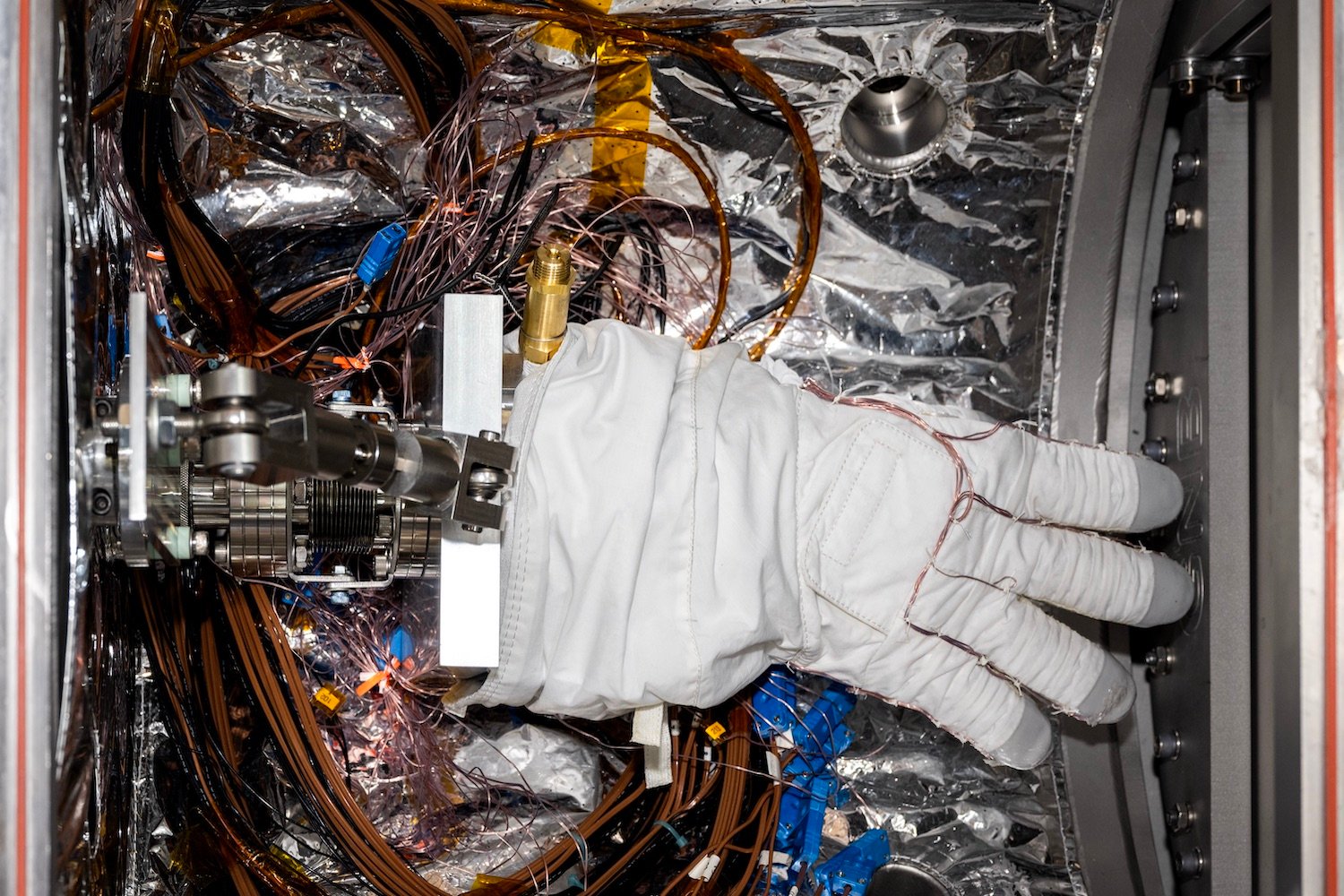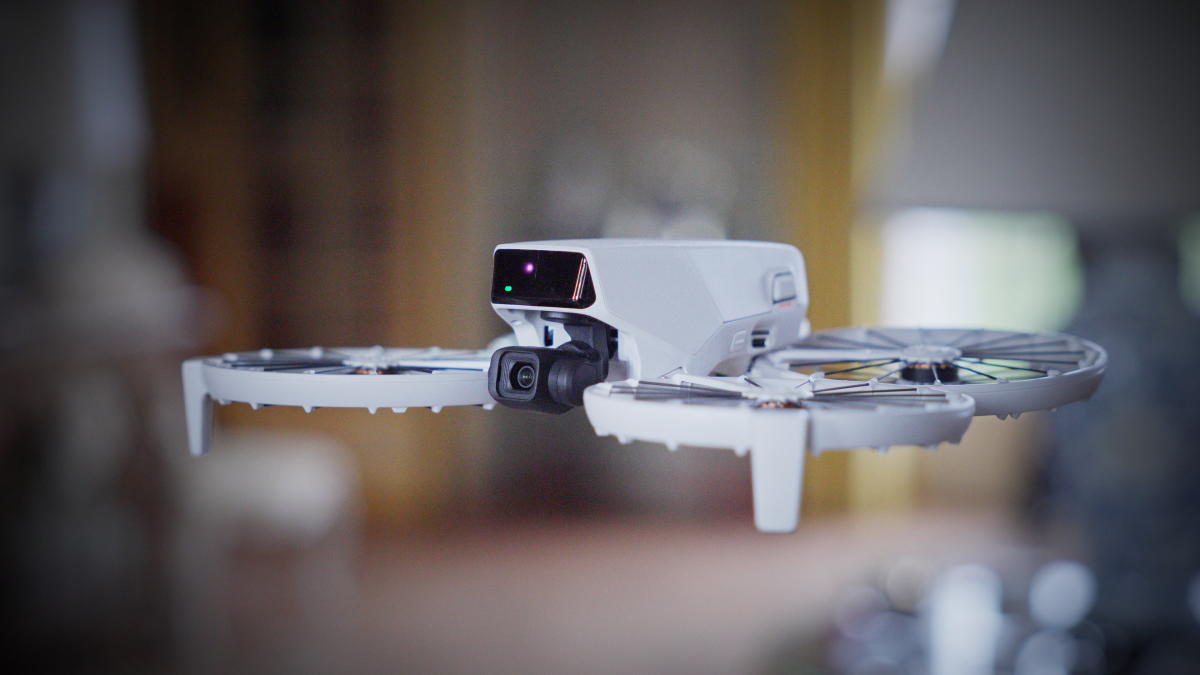NASA’s Quest for Warmth in the Lunar South Pole
NASA’s upcoming missions to the Moon are expected to be significantly colder than the Apollo program, prompting the agency to find ways to keep its astronauts warm in the permanently shadowed regions of the lunar south pole. A team of NASA engineers is readying to test elbow joints in a large cryogenic chamber to assess the fabric of the next-generation spacesuits designed for lunar missions.
The Cryogenic Ice Testing Chamber
The Cryogenic Ice Testing, Acquisition Development, and Excavation Laboratory (CITADEL) was initially built to test robot parts for non-crewed missions to icy moons in the solar system. However, it is now being utilized to support humanity’s long-awaited return to the Moon. CITADEL is a 4 feet tall and 5 feet wide chamber housed at NASA’s Jet Propulsion Laboratory, which uses compressed helium to reach temperatures as low as -370 Fahrenheit (-223 Celsius).
[Image: An astronaut boot — part of a NASA lunar spacesuit prototype, the xEMU — is prepared for testing in JPL’s CITADEL. Credit: NASA/JPL-Caltech]Testing the Limits of Spacesuit Components
Zach Fester, an engineer with the Advanced Suit Team at NASA Johnson, stated, "We want to understand the risk to astronauts going into permanently shadowed regions, and gloves and boots are key because they make prolonged contact with cold surfaces and tools." The team is using a custom-built manikin hand and foot for testing inside CITADEL, equipped with a system of fluid loops to mimic the flow of warm blood through the appendages and dozens of temperature and heat flux sensors to collect data.
Simulating Lunar Missions
CITADEL is equipped with a robotic arm, visible and infrared light cameras, and load locks to maintain its chilled vacuum state. For simulations of the Moon missions, the team will add abrasion testing and lunar regolith-like material to the chamber, as well as aluminum blocks to simulate tools that astronauts might use. In the past, NASA used actual astronauts for thermal testing, but now relies on the custom-built manikin for more accurate and controlled testing.
The Artemis 3 Mission
NASA’s Artemis 3 mission is scheduled to land astronauts on the lunar surface for the first time since the Apollo era. The mission will explore the lunar south pole, which may hold water ice in permanently shadowed regions but presents a harsh environment due to extreme temperatures and lack of sunlight. The Artemis astronauts will spend around two hours at a time inside craters that may contain ice deposits, where temperatures can reach -414 degrees Fahrenheit (-248 Celsius).
[Image: An engineer collects simulated lunar samples while wearing the Axiom Extravehicular Mobility Unit spacesuit during testing at NASA Johnson in late 2023. Credit: Axiom Space]New Spacesuits for the Moon
Astronauts returning to the Moon will wear new, fashion-forward spacesuits developed by Axiom Space. The company partnered with Prada to design the AxEMU (Axiom Extravehicular Mobility Unit) spacesuit, which builds on the legacy of the Apollo spacesuits while incorporating new technology for improved mobility and protection. The ongoing tests in CITADEL will help NASA prepare criteria for its next-generation AxEMU spacesuits.
Testing Results and Future Plans
The gloves being tested in CITADEL have so far performed poorly, indicating that they would not meet the thermal requirements of the lunar south pole. Results from the testing on the boots have not been fully analyzed yet. Shane McFarland, technology development lead for the Advanced Suit Team at NASA Johnson, stated, "This test is looking to identify what the limits are: How long can that glove or boot be in that lunar environment? We want to quantify what our capability gap is for the current hardware so we can give that information to the Artemis suit vendor."
The Future of Lunar Exploration
NASA’s Artemis 3 mission is set to launch in 2027, sending astronauts on a journey across previously unexplored areas of the Moon. The agency hopes that the ongoing testing and development of new spacesuits will help keep astronauts warm and safe in the dark and chilly lunar south pole.
Source Link





